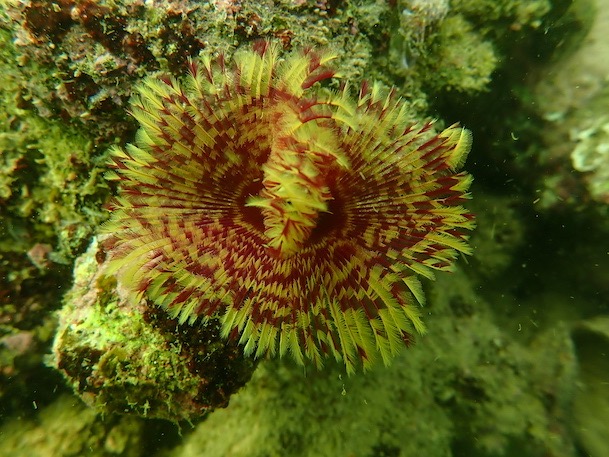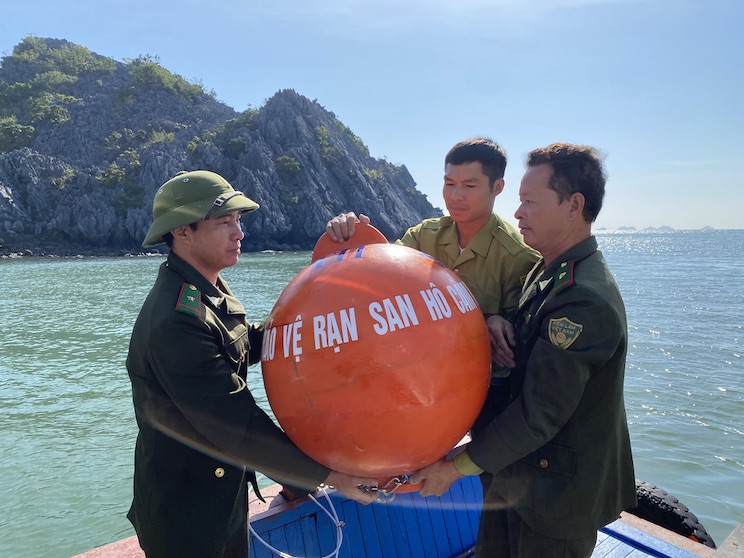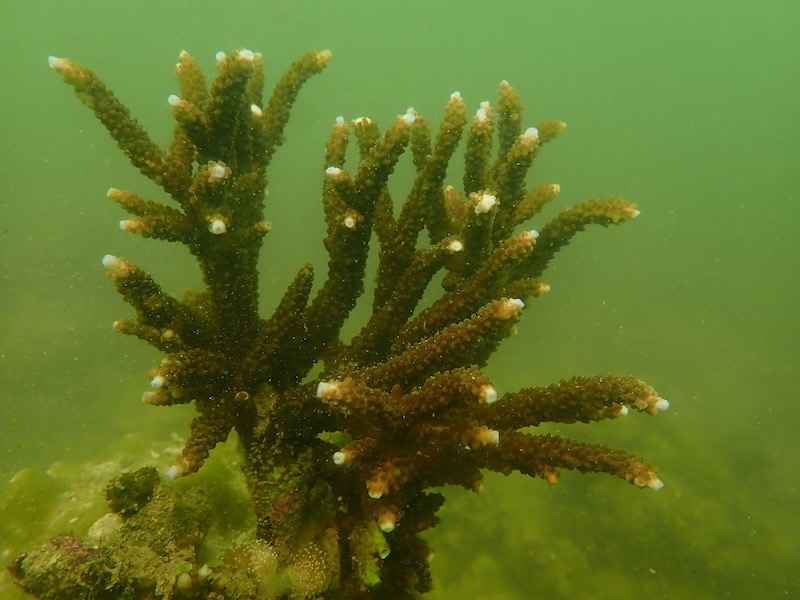Steady decline
Mr. Nguyen Van Thiu - Director of Cat Ba National Park - said: Marine ecosystems in Cat Ba are being heavily impacted by economic development, tourism services development, especially rampant aquaculture activities, without planning, which have been putting great pressure on the environment. Overexploitation and destructive methods such as mines and electricity have caused natural resources to decline rapidly.

“All of the above factors have led to a continuous decline in coral reefs in Cat Ba archipelago in terms of coverage, area and number of species over the past 15 years. In addition, natural factors combined with the slow self-recovery ability of coral reefs have been reducing the distribution area of coral reefs in Cat Ba archipelago,” said Mr. Thiu.
From 2021 to 2022, VB4E, IUCN and Cat Ba National Park have implemented a coral reef monitoring program to propose effective coral reef management measures. Based on the monitoring results, Cat Ba National Park has proposed a number of solutions to effectively manage and conserve coral reefs in this area, including: Establishing a system of buoys to protect and warn of coral reef protection.
Protection work is difficult.
On that basis, from 2023 - 2024, IUCN through VB4E will continue to support Cat Ba National Park in establishing a system of buoys to divide the coral reef ecosystem in some areas with good coral reef distribution that need to be protected such as Van Ta, Ba Dinh, Gio Cung and Cat Dua areas. In two years, 23 buoys were released in the above area with a total area of nearly 34 hectares of sea surface zoned for management and protection.

The buoy release has contributed to clearly defining the distribution areas of coral reefs, helping fishing vessels and tourism services to identify the boundaries of the coral reef ecosystem protection area and avoid traveling in this area. At the same time, it creates favorable conditions for patrolling, inspecting and strengthening law enforcement, and handling violations.
However, due to the influence of the saltwater environment and barnacles, barnacles, and parasitic organisms on the rope and buoy system, the buoy rope system can break, and many buoys can be punctured. Therefore, the buoy anchor system needs to be maintained at least once a year.

Dr. Nguyen Dang Ngai - Deputy Director of the Vietnam Institute of Marine Resources and Environment - commented: "It is necessary to place warning buoys to limit the above activities. However, due to the large area but the current number of buoys is limited, it is necessary to identify areas with many corals as well as areas affected by humans to place warnings."
He also said that after Typhoon Yagi, there was also certain damage under the ocean, so it is necessary to conduct research to determine the damage, especially to coral reefs.

On November 29, in Cat Ba, the International Union for Conservation of Nature (IUCN) in collaboration with Cat Ba National Park and TH Food Chain Joint Stock Company (TH Group) continued to release buoys to protect coral reefs. Mr. Nguyen The Phuong - Marketing Planning Manager of THFC Company, representative of TH Group said: The sponsorship of this coral reef conservation project in Cat Ba National Park is within the framework of the Vietnam Business Alliance for the Environment from 2021 to 2024.










